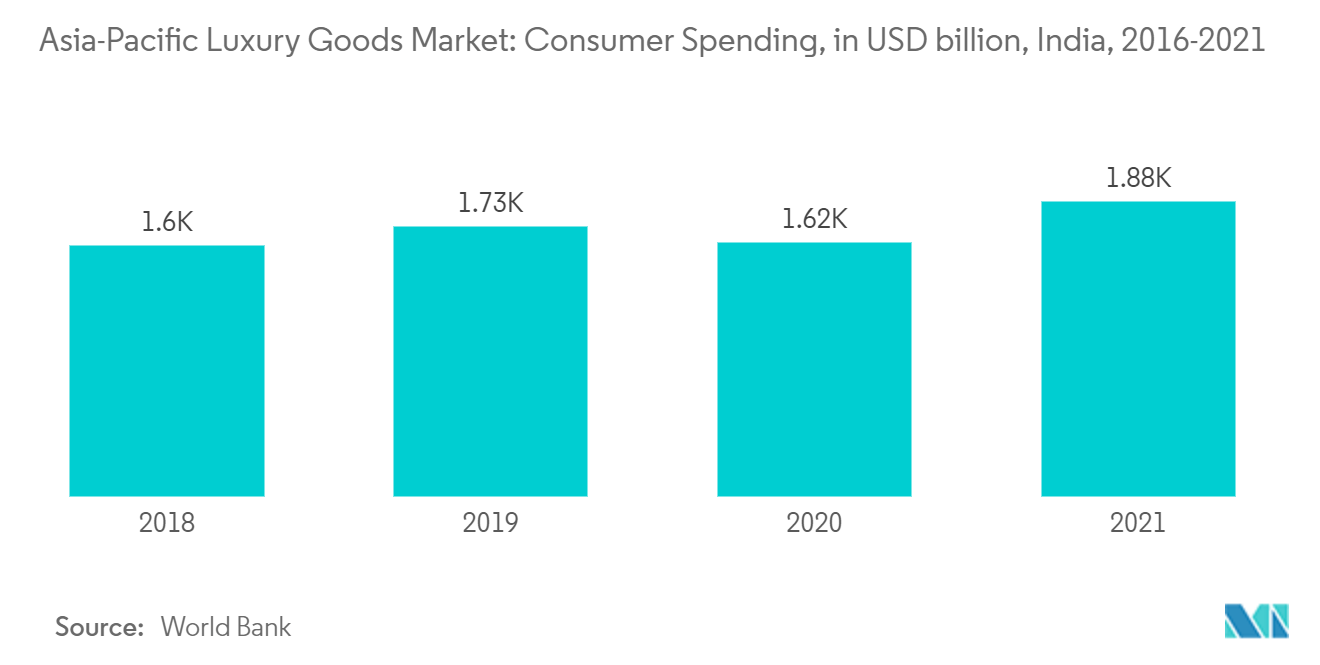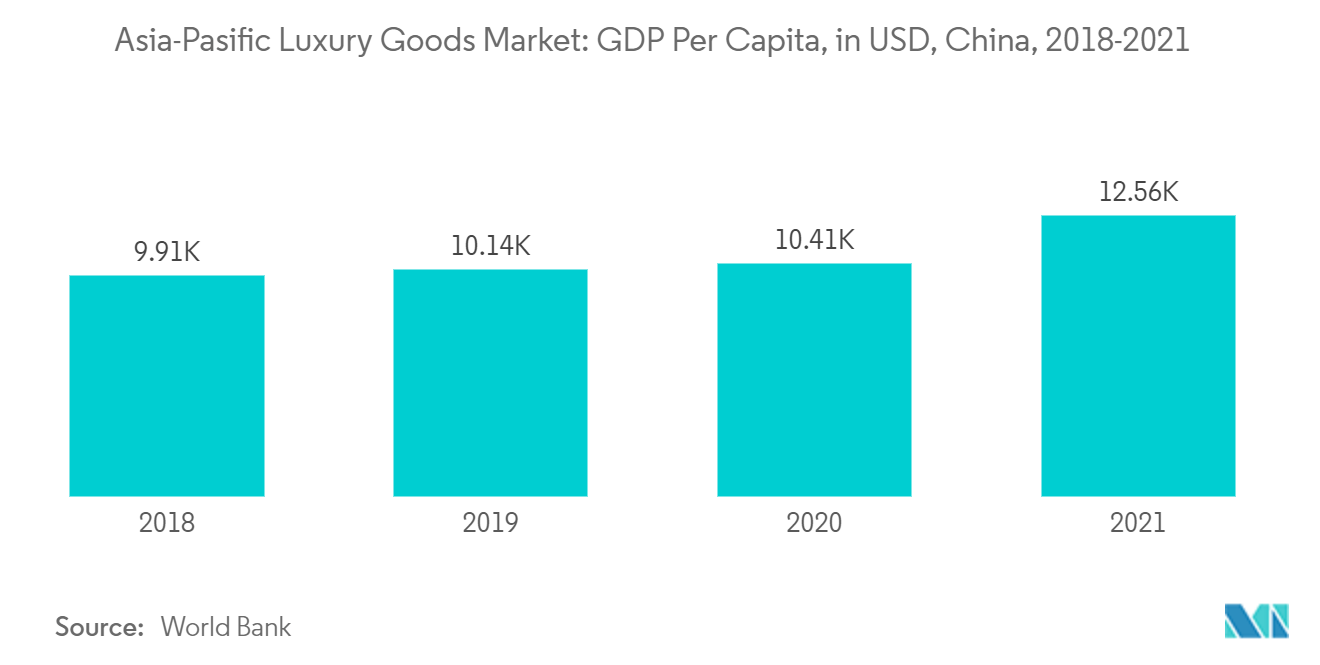Market Trends of APAC Luxury Goods Industry
This section covers the major market trends shaping the APAC Luxury Goods Market according to our research experts:
Rising Trend of Personalization and Customization of Goods
With the rising trend of personalization and customization, the players have started designing customized luxury goods to increase their customer base, resulting in an increase in sales volume. The key players in the Asia-Pacific region are using customer interaction platforms to get customers' feedback on a regular basis. For instance, XL Enterprises offers its customized leather goods under the name XL Fashions. XL Fashion's products are made using both traditional and modern manufacturing techniques. Specializing in customization and personalization, the company has developed working relationships with individuals and corporate customers. All leather goods are made to order, tailored to the customer's preferences, and can be personalized with their name, corporate logo, or monogram.
The majority of personalized luxury products are given as gifts on various occasions. Luxury handbag manufacturers continue to offer options for customers to customize the lining fabric, the colors of specific components, the hardware used on the bag, and even the pattern that the consumer wants to be displayed. Luxury goods customers appreciate being treated with the utmost care, and there are now more options to do it, particularly through digital channels, mobile apps, personalization in messages, and customer involvement. With the rising fashion consciousness, there is an increase in customer spending on personal goods. As a result, the key players operating in the market are focusing on offering a wide assortment of customized products in different styles, designs, and colors.

China Holds Largest Market Share
Spending in China's market is booming owing to solid consumer confidence and a willingness to buy, especially among the younger generations. These young consumers are well-informed about luxury and eager to embrace innovative trends, such as the convergence of high fashion and sportswear. The Chinese government's reduction in import duties and stricter controls over gray markets, combined with brands' efforts to narrow the price gap with overseas markets, have led more Chinese consumers to make their luxury purchases in China. According to a public survey, 46% of people preferred to buy smartphones in 2021, followed by 46% for clothing, 48% for shoes, and 31% for personal computers or laptops. Sustainability and digitalization are also factors augmenting the growth of the market. Chinese consumers are spending more on luxury goods as a result of an increase in disposable income. According to the National Bureau of Statistics, average annual income climbed nearly threefold from 37,000 yuan in 2010 to just under 100,000 yuan in 2020.

